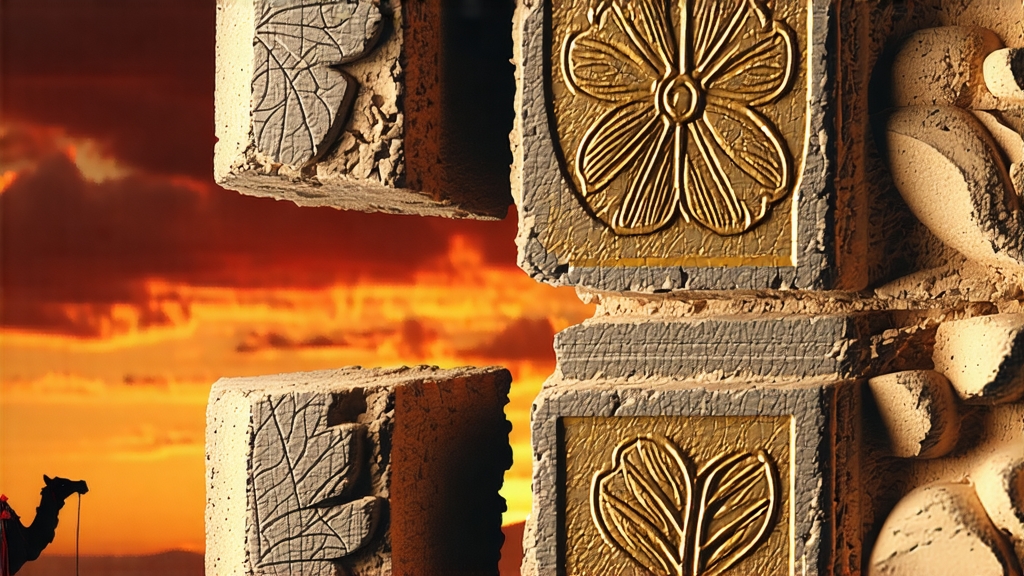
If green tea is the fresh-faced youth of Chinese tea and pu-erh the contemplative middle-aged sage, then Fu brick tea (Fú zhuān chá) is the quiet alchemist—dark, unassuming, yet hiding inside itself a constellation of microscopic golden stars. Produced only in the humid summer of Shaanxi and Hunan, this compressed brick was once the currency of nomads, the medicine of monks, and the digestive salvation of Silk-Road merchants who lived on mutton and barley. Today it travels the world again, not on camelback but in FedEx envelopes, intriguing sommeliers with its sugar-cane sweetness and surprising health geeks with its probiotic “golden flowers.” This article invites you to meet Fu brick on its own terms: from the Tang-dynasty frontier posts to your own gaiwan, from the sweaty piling rooms of Anhua County to the bright spotlight of a third-wave café in Brooklyn.
-
A leaf born on horseback
The story begins in the 7th century, when imperial China needed war horses and the Tibetan plateau needed tea. The Tea-Horse Trade Bureau standardized large-leaf Assamica tea into hard bricks so that porters could strap 30 kg loads across 4,000 m passes without breakage. By the Ming dynasty the court had decreed that only two factories—Jingyang in Shaanxi and Anhua in Hunan—could supply the “official frontier tea.” Those bricks were dark, coarse, and deliberately moistened so they would not crack; the unintended consequence was microbial fermentation. Over centuries, traders noticed that bricks stored in the muggy Changsha summer developed tiny yellow specks that smelled of apricot and damp hay. Rather than ruin, this “mold” refined the tea, softening its edge and adding a honeyed finish. In 1368 the Jingyang workshop branded the first “Fu” brick—Fu meaning both “blessing” and “Shaanxi west of the pass”—and the name stuck. -
What exactly are “golden flowers”?
Eurotium cristatum, a harmless ascomycete, is the celebrity behind Fu brick’s mystique. Under 28–30 °C and 75–85 % relative humidity the spores germinate, forming bright yellow spherical fruiting bodies 0.3–0.5 mm across. Chinese merchants poetically call them “golden flowers” (jīn huā). Far from being spoilage, they lower the tea’s catechins and caffeine while raising polysaccharides and the unique metabolite EGCG-gallate, yielding a liquor that is less astringent, more umami, and gentle on an empty stomach. Modern sequencing shows that each gram of well-fermented Fu brick contains 1–2 million colony-forming units—comparable to a probiotic yogurt, yet dairy-free and shelf-stable for decades. -
From forest to brick: the craft in seven steps
a. Picking: Only the 3rd–5th mature leaves of Camellia sinensis var. assamica are taken after Dragon Boat Festival, when fibers thicken and sugar peaks.
b. Fixing: A 3-minute 280 °C pan-fire kills green enzymes but keeps leaf structure intact for later microbial invasion.
c. Rolling: 40-minute machine rolling ruptures 60 % of cells, releasing sticky sugars that will cement the brick.
d. Piling: The semi-dry leaves are heaped 70 cm high for 12 hours; surface temperature climbs to 45 °C, initiating auto-fermentation similar to shou pu-erh.
e. Packing: 1.6 kg of leaf is slipped into a 35 × 18 × 4 cm pinewood mold lined with cotton cloth; a hydraulic press exerts 50 t for 30 seconds, squeezing moisture to 22 %.
f. Flowering: Bricks are transferred to a “flower room” stacked like Jenga blocks, vents opened every 6 h to maintain the golden-flower micro-climate for 7–10 days.
g. Drying: A 48-hour 45 °C low bake halts fermentation, locking in 9–11 % moisture—dry enough to prevent spoilage, moist enough for slow aging. -
Grades and regional styles
Jingyang (Shaanxi) bricks are pressed tighter, yielding a peppery, cumin note and a rust-red liquor; they age into cedar and tobacco. Anhua